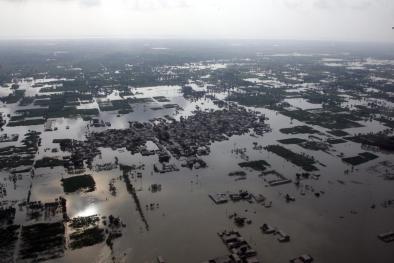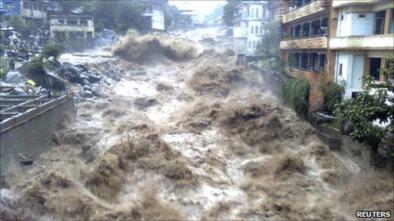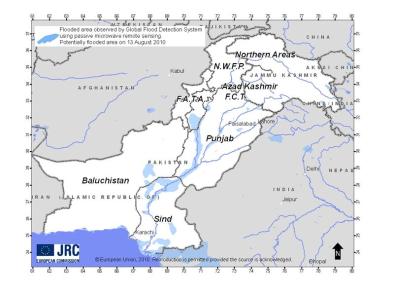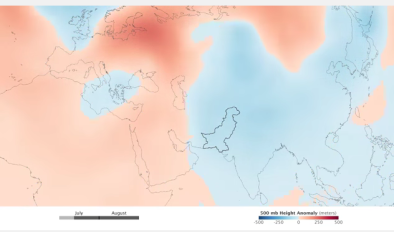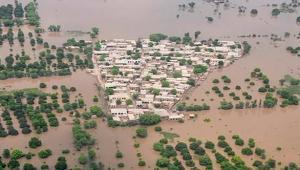Pakistan Floods 2010
The Pakistan floods of 2010 started slowly at the end of July and gradually accelerated over the following weeks. Disaster assessment maps show that almost the entire northern part of Pakistan and most of its central region was hit. During the most intense storms, about a foot of rain fell over a 36-hour period, and the Indus River reached its highest level in 110 years of record keeping.[1]
Global warming leads to an increase in flood risk in two primary ways: by increasing ocean evaporation into the atmosphere and the amount of water vapor the atmosphere can hold when fully saturated. Due to these processes, there is more water available during precipitation events.
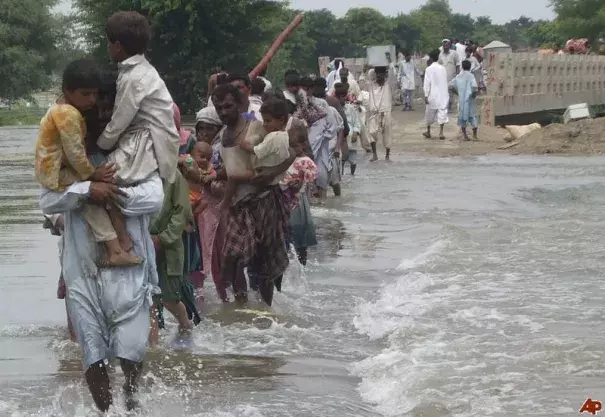
Climate science at-a-glance
- Climate change loads storms with more rainfall, increasing the threat of flooding.
- A warmer atmosphere holds and dumps more moisture. Measurements of water vapor in the air during the storm were extraordinarily high.
- Increasing extreme precipitation is an observed global trend firmly attributed to climate change.
Pakistan floods of 2010 go down in history
The Pakistan floods along the Indus River Basin in July 2010 were one of the most devastating natural disasters in recorded history.[1] Twenty million people were affected as homes, livelihoods, and infrastructure were wiped out, access to food and clean water were cut off, and transportation, energy, and communication systems were disrupted.[1] One-fifth of this largely agricultural country was submerged by the flood waters for weeks, and the World Bank estimated recovery costs at US$10 billion.[1]
Extreme precipitation is a clear signal of climate change
A warmer atmosphere drives more extreme precipitation across all storm types, increasing the risk of flooding. Extreme and record events driven by natural variability and amplified by climate change are consistent with what climate science projects in a warming world.
Studies show the amount of water vapor in the atmosphere has in fact increased.[2][3] Storms reach out and gather water vapor over regions that are 10-25 times as large as the precipitation area, thus multiplying the effect of increased atmospheric moisture.[4] The observed increases have been studied and formally attributed global warming.[5][6][7] One of the clearest changes in weather globally and across the United States is the increasing frequency of heavy rain.[10]
There's no doubt that clearly the climate change is contributing, a major contributing factor.
-- Ghassem Asrar, director of the World Climate Research Programme and WMO[8]
We will always have climate extremes. But it looks like climate change is exacerbating the intensity of the extremes.
-- Omar Baddour, chief of climate data management applications at WMO headquarters in Geneva[9]
Related Content
